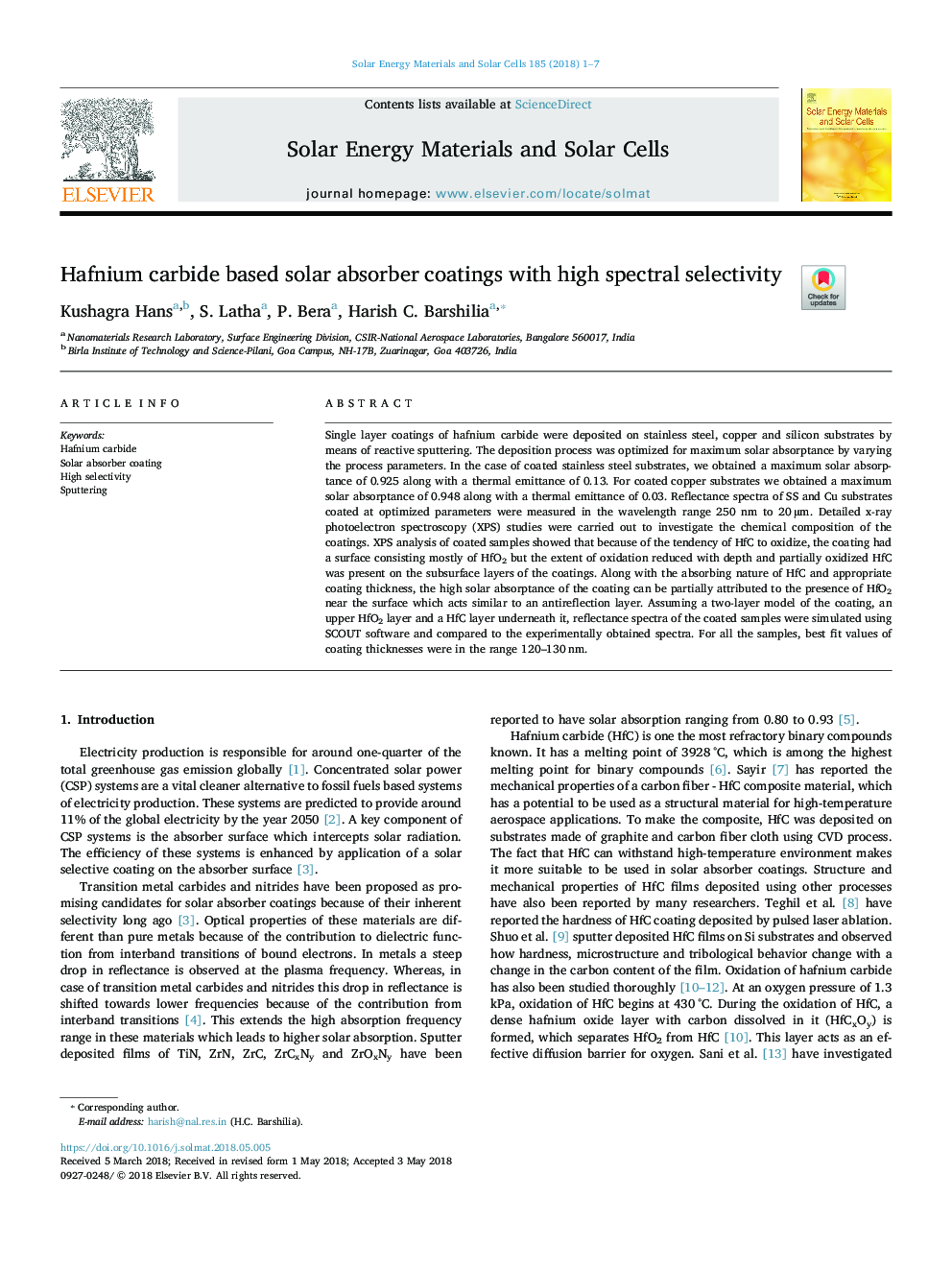| Article ID | Journal | Published Year | Pages | File Type |
|---|---|---|---|---|
| 6533894 | Solar Energy Materials and Solar Cells | 2018 | 7 Pages |
Abstract
Single layer coatings of hafnium carbide were deposited on stainless steel, copper and silicon substrates by means of reactive sputtering. The deposition process was optimized for maximum solar absorptance by varying the process parameters. In the case of coated stainless steel substrates, we obtained a maximum solar absorptance of 0.925 along with a thermal emittance of 0.13. For coated copper substrates we obtained a maximum solar absorptance of 0.948 along with a thermal emittance of 0.03. Reflectance spectra of SS and Cu substrates coated at optimized parameters were measured in the wavelength range 250 nm to 20â¯Âµm. Detailed x-ray photoelectron spectroscopy (XPS) studies were carried out to investigate the chemical composition of the coatings. XPS analysis of coated samples showed that because of the tendency of HfC to oxidize, the coating had a surface consisting mostly of HfO2 but the extent of oxidation reduced with depth and partially oxidized HfC was present on the subsurface layers of the coatings. Along with the absorbing nature of HfC and appropriate coating thickness, the high solar absorptance of the coating can be partially attributed to the presence of HfO2 near the surface which acts similar to an antireflection layer. Assuming a two-layer model of the coating, an upper HfO2 layer and a HfC layer underneath it, reflectance spectra of the coated samples were simulated using SCOUT software and compared to the experimentally obtained spectra. For all the samples, best fit values of coating thicknesses were in the range 120-130â¯nm.
Related Topics
Physical Sciences and Engineering
Chemical Engineering
Catalysis
Authors
Kushagra Hans, S. Latha, P. Bera, Harish C. Barshilia,
